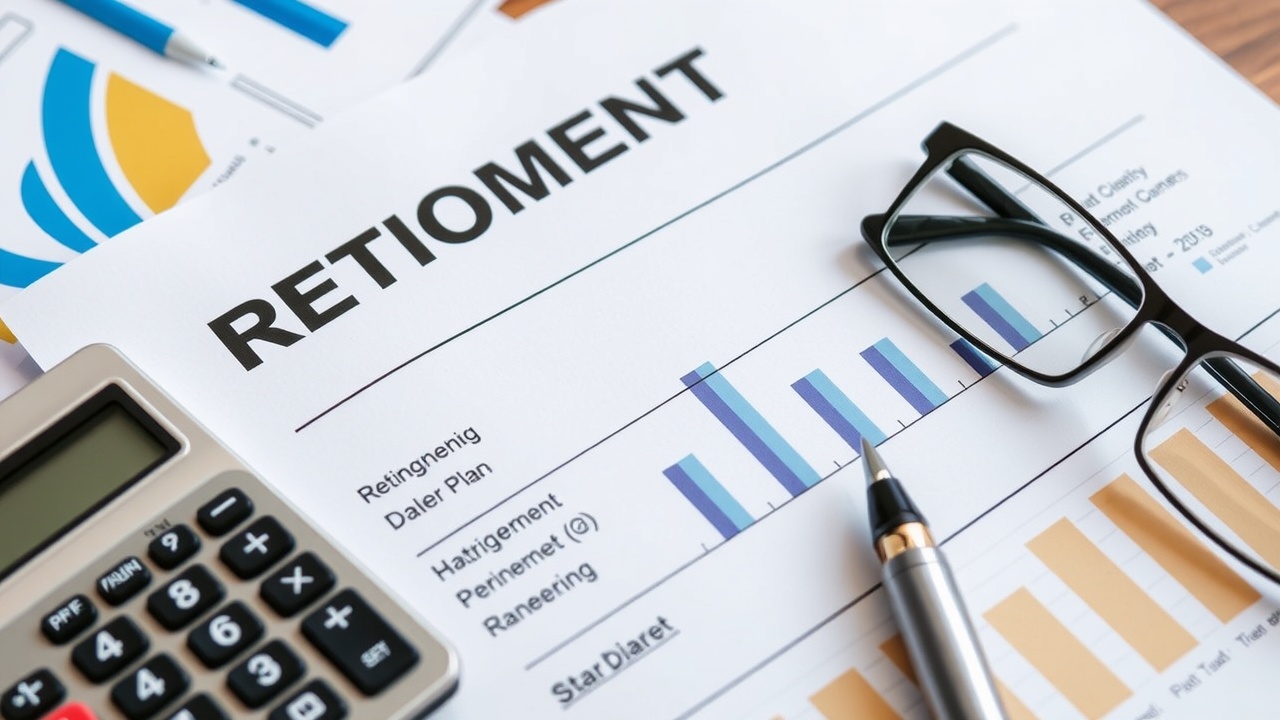
Knowing how much you can get from a £250K pension pot will help you plan for your golden years What would your retirement income be?
Because of the high cost of living, having a sizable pension fund is still essential for retirement planning and making sure you have enough money for your golden years.
Despite rising energy prices, geopolitical tensions, and Donald Trump's trade tariffs, UK inflation is still high even though it is no longer in the double digits.
The triple lock and the state pension are also uncertain, so it's not clear if you'll have these benefits to rely on when you're close to retirement. For this reason, it's critical to be financially prepared.
After decades of retirement savings, it is difficult to forecast the value of your pension fund, particularly in light of recent volatility. However, knowing your income potential can help you plan and set goals for your golden years.
"How much you are likely to need is one of the big questions when considering retirement planning," says James Corcoran, Lumin Wealth's chartered financial planner. "No one has a crystal ball, and there are a lot of unknowns, like how long you'll live, whether you'll require long-term care, and what kind of support you might want to give your loved ones.
But in financial planning, we usually examine different scenarios to determine whether people are headed in the right direction for their desired retirement, and then we look at how we can help them get there. Forecasting cash flow can be a very useful tool in this situation.
Is 250,000 sufficient for retirement?
Everyone has to pay a high price for living, and retirees have seen their expenses increase as well.
A typical comfortable retirement now costs an average of 43,900 per year for a single person, up 800 from 2024, according to the Pensions and Lifetime Savings Association (PLSA).
According to the PLSA, the cost of living for a two-person household looking to lead a "comfortable" lifestyle has gone up from 59,000 to 60,600 annually.
Joshua Gerstler, a chartered financial planner at The Orchard Practice, cautions that people frequently underestimate the amount of money they must save in order to be able to enjoy a respectable retirement standard.
According to him, "250,000 will not last very long because most couples will now enjoy a three-decade retirement." Nowadays, the majority of financial advisors will prepare a customized lifetime cash flow for you in order to determine how much you will require in retirement and how much you should invest in order to meet this goal.
While retirees may have other sources of income, such as a buy-to-let portfolio, Corcoran adds that the full new state pension, which is worth 11,973 this year, will give them a financial boost in retirement.
He asserts, "The pathway to retirement is no longer typical." People rarely work until they reach the state pension age and then simply quit. Many people will have a variety of jobs and sources of income.
Check out our "average pension pot by age" guide to see how your pension pot stacks up against your peers.
Based on the most recent annuity rates and drawdown techniques, this is the amount of retirement income you could produce from a £250,000 pension pot.
How much can you make with a pension fund of £250,000?
You can access your pension fund in a few different ways after you retire. Annuities offer a guaranteed income for life, while pension drawdown allows you to maintain your investments and take regular withdrawals.
Chartered financial planner David Gibb of Quilter Cheviot says, "Annuities provide simplicity and a fixed income but lack flexibility."
On the other hand, drawdown offers flexibility and complexity, with 25% of the withdrawal being tax-free and the remaining amount being taxable.
He cautions, however, that if a person chooses to draw down and take taxable income, they will only be able to contribute a maximum of £4,000 per year to their pension under the Money Purchase Annual Allowance if they ever want to start making contributions again. Meanwhile, you cannot get your money back once you take out an annuity. Therefore, before you raid your pension fund, make sure you are prepared to retire.
1.
At what rate does £250,000 buy an annuity? On the strength of recent interest rate increases, annuity rates have reached all-time highs; however, as interest rates decline, the products may start to lose appeal.
This option uses your pension fund to buy an annuity that will pay you a fixed income for the rest of your life based on your age, health, and residence. The amount of money you make from a £250,000 pension fund will vary depending on your personal lifestyle and the rates in effect at the time.
According to Quilter Cheviot's analysis for the BFIA, a pension pot of £250,000 could give a healthy 65-year-old an annual income of £16,258 based on average rates of 6.5 percent.
Because of the risks involved, these amounts may rise by about 600 for smokers and by about 1,000 for people with other health conditions each year, according to Quilter Cheviot.
However, since annuities can increase in value as you age, it might be worthwhile to wait. According to Quilter Cheviot, a level annuity could provide £20,227 annually for a 75-year-old.
Additionally, you are able to access 25% of your pension pot tax-free; however, depending on your total earnings, income tax may be due on the annuity payments.
2. Pension drawdown method
Although an annuity may offer stability, you cannot raise the payments if your needs change unless your payments are linked to inflation.
An alternative is drawdown, in which you maintain your pension fund invested and either access the funds as needed or take regular withdrawals that may vary based on your expenses. The primary danger is that, if improperly managed, your pension fund may be exhausted and run out, leaving you with a meager retirement income.
"4 percent rule" for withdrawals is what Fidelity International associate director Ed Monk recommends. According to this idea, retirees withdraw 4% of the pot annually, with the remaining portion remaining invested in the hopes that it won't run out. According to the 4 percent rule, you could withdraw 7,500 annually after taking 62,500 as 25 percent tax-free cash, or 9,375 if you used the 5 percent rule. Withdrawals and other earnings that place you in the basic or higher rate tax brackets will result in income tax due.
The rising state pension and frozen tax thresholds are making that a bigger problem for pensioners.
Monk emphasizes that even though the drawdown amount of £7,500 is less than the annuity rate, the pension funds are still yours to do with as you see fit, including leaving as an inheritance for your surviving family members.
According to Monk, "Money used to purchase an annuity is no longer yours, although certain products will ensure benefits are paid to loved ones after your death."
"To effectively maximize your income tax, you don't have to choose just one way to access your pension funds; you can combine and modify these options over time."
How to create a pension fund of £250,000.
Your starting and retirement dates will determine how long it takes to build up a £250,000 pension fund.
With a growth rate of 5% annually, you would accumulate a pot worth about 250,000 if you invested £250 a month for 33 years. In contrast, if you had only 25 years, you would require about £520 a month.
Gibb continues, "The future value of 250,000 will be less due to inflation, so a monthly saving of 880 is required to save an equivalent amount in today's terms."
"People tend to underestimate the amount of money they need to save for a comfortable retirement," cautions Gerstler of The Orchard Practice.
According to him, "250,000 is not going to last very long because most couples will now enjoy a three-decade retirement." The majority of financial advisors nowadays will prepare a customized lifetime cash flow for you in order to determine how much you will require in retirement and how much you should invest in order to meet this goal.
According to Corcoran, retirees may have other sources of income, such as a buy-to-let portfolio, but the state pension, which is worth 11,502 this year, will give them a financial boost in retirement.
According to him, "the pathway to retirement is no longer typical,". People rarely work until they reach the state pension age and then simply quit. A lot of people will have a variety of jobs and sources of income.
Remember to include taxes.
Even if £250,000 is sufficient, taxes must be taken into account, particularly in light of fiscal drag and frozen tax thresholds.
25% of your pension is tax-free, after which any withdrawals from drawdown or annuity payments are subject to marginal taxation above any personal allowances.
Any additional payments, especially large withdrawals, could push you into higher tax brackets because the full new state pension, currently at 11,973, has the potential to push people close to the basic rate threshold.
You may need to save more than you initially anticipated and make plans to pay taxes as well as for yourself because this could lower the amount of money you receive from your pension fund.
A person's pension wealth will be included in their estate for inheritance tax purposes starting in 2027, so it's crucial to determine how much you'll need to save and spend in retirement to avoid leaving your loved ones with a large bill.














Leave a comment on: Is a pension pot of £250,000 sufficient for retirement?